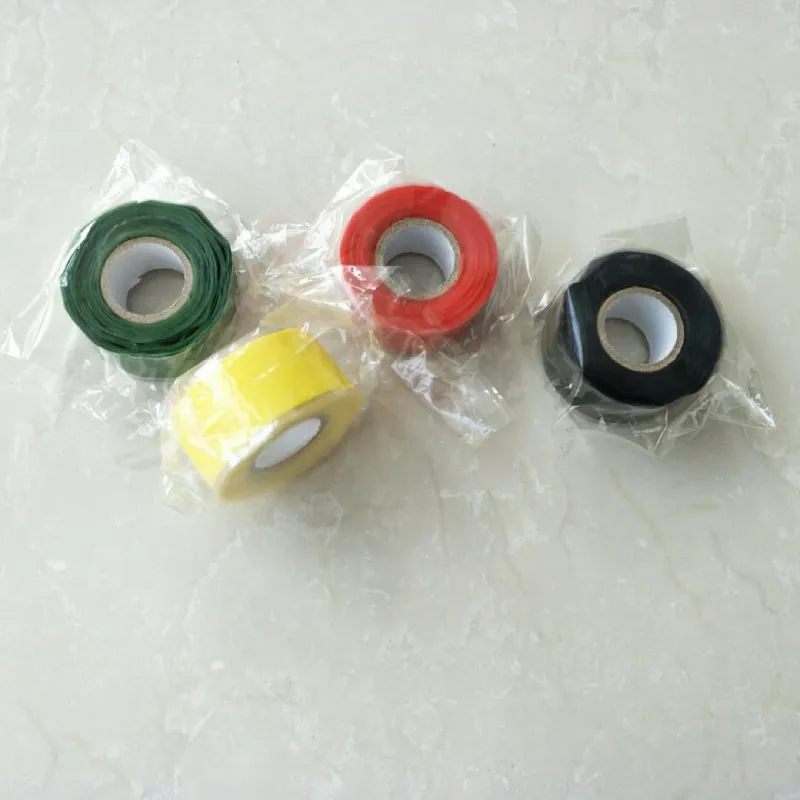The Versatility and Importance of Plastic Electrical Tape
Plastic electrical tape, commonly referred to as electrical tape, is an essential tool widely used in both professional and DIY electrical work. This specialized tape serves a fundamental purpose insulating electrical wires and connections to prevent electrical shocks and short circuits. Made from PVC (polyvinyl chloride) or other plastic materials, electrical tape is designed to withstand high temperatures and provide excellent protection in various environments.
Properties and Specifications
Electrical tape comes in various colors, each serving a specific purpose. For example, black is typically used for insulation, while red and green may denote specific wiring configurations or phases in industrial settings. The tape is available in several thicknesses, enabling users to select the appropriate type for their specific application. One of the most crucial features of plastic electrical tape is its ability to stretch and adhere firmly to surfaces without losing its insulating properties over time.
The dielectric strength of electrical tape is another vital aspect. The tape's insulation capabilities are measured in volts per mil, with higher values indicating superior insulation. Most quality electrical tapes have a dielectric strength of at least 600 volts, making them suitable for a wide range of electrical tasks.
Applications
The applications for plastic electrical tape are diverse, extending beyond just wiring connections
. Electricians and maintenance workers frequently use it to wrap and insulate exposed wires and connections, thereby reducing the risk of electrical shock. The tape can also secure and bundle multiple wires together, providing a cleaner and more organized appearance.plastic electrical tape

Additionally, electrical tape is an excellent choice for marking and color-coding wires in complex electrical systems, which can significantly ease troubleshooting and repairs. Facilities often use different colors to identify circuits, thereby promoting safety and efficiency.
Beyond the electrical industry, plastic electrical tape has found its place in various DIY projects. From household repairs to crafting, its versatility makes it a staple in many toolboxes. DIY enthusiasts often use it to secure objects together, protect surfaces during painting, or even as a quick-fix alternative for minor repairs.
Safety Considerations
While plastic electrical tape is highly effective, safety remains a top priority. Users should ensure that the tape is appropriately applied, not stretched beyond its capacity, and regularly inspected for wear and tear. Over time, environmental factors such as moisture, heat, and ultraviolet light can degrade the tape, leading to potential failures in insulation. Therefore, replacing any damaged or worn tape is crucial to maintaining the integrity of electrical systems.
Conclusion
In summary, plastic electrical tape is a vital material in the electrical field and beyond. Its unique properties, including excellent insulation capabilities, versatility in application, and availability in many colors and sizes, make it an indispensable tool for professionals and DIY enthusiasts alike. As we continue to rely on electricity in our daily lives, the significance of selecting the right electrical tape cannot be understated. Proper use and maintenance of plastic electrical tape ensure safety and reliability, making it a simple yet effective solution for various electrical and creative challenges. Whether you are wiring a new installation, performing repairs at home, or tackling a craft project, plastic electrical tape is a reliable companion that provides peace of mind.
-
XIANGFAN Rubber Tape-Ultimate Solutions for All Your Insulation NeedsNewsJun.24,2025
-
XIANGFAN Rubber Tape-Protection for Industrial and Residential ApplicationsNewsJun.24,2025
-
XIANGFAN Rubber Tape: Superior Safety and Sealing for Demanding EnvironmentsNewsJun.24,2025
-
XIANGFAN Rubber Tape: Reliable Solutions for Every Electrical ChallengeNewsJun.24,2025
-
XIANGFAN Electrical & Industrial Tape: Powering Reliability Across IndustriesNewsJun.24,2025
-
XIANGFAN Electrical & Industrial Tape: Excellence in Every ApplicationNewsJun.24,2025
